How to Install a New Motorcycle Chain
How do you know when your chain needs to be replaced? Go to your rear sprocket and pull straight back on the chain. If your chain pulls away from the sprockets by much, it is probably stretched out. If the chain does not pull away and stays right on the sprocket, then the chain is not stretched out yet.
Also, if your sprockets no longer look like points but a bunch of little hooks you need to replace it all. Another wear indication is tight links or kinks in the chain. This is caused by a lack of lube that has caused links stick.
Tools We Used
The mathmatical way to measure chain wear is to measure sixteen pins, not links. If the distance between the pins is greater than 256.5mm then the chain is outside of it’s wear limit.
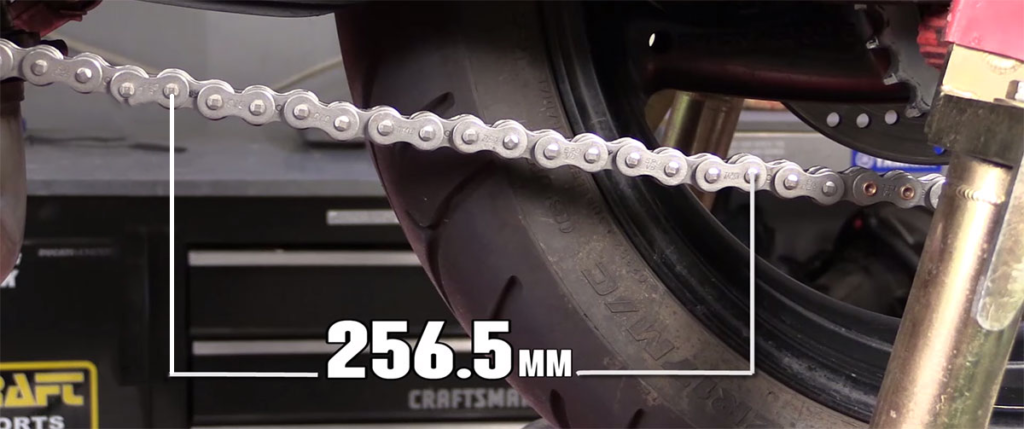
However, the most common way to know if your chain needs to be replaced comes from measuring your slack. As a chain wears, grooves are cut into the pins which gives the illusion of chain-stretch. No chain wears perfectly even so every chain will develop a variance in the chain slack measurement. If the variance between the tight spots and loose spots of the chain become too great, you’ll want to replace the chain. If the chain is not replaced at this point, the variances in slack will put a lot of stress on the sprockets. Replace the chain early and most times you can run two chains to one set of sprockets.
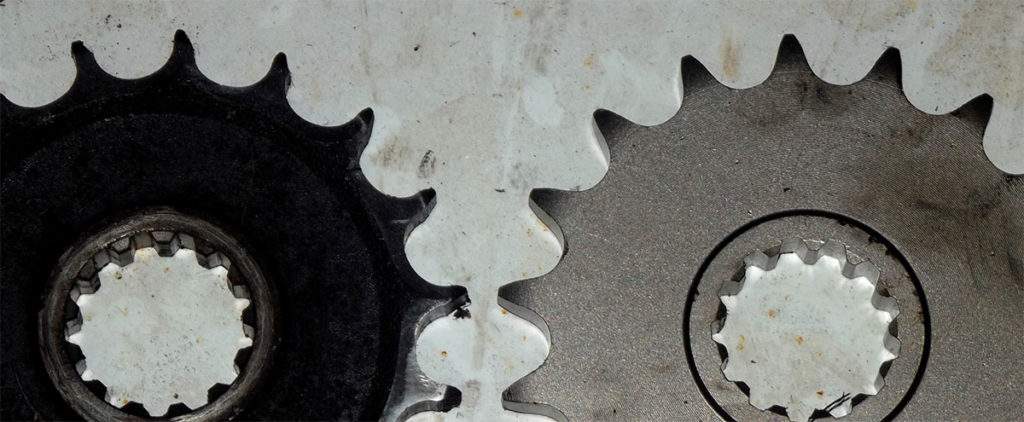
But then there is the master link. Every new bike today comes with a link-less chain. Meaning there is no master link. Every link is riveted. While master link chains are still available, the best idea is to purchase a chain rivet tool (about $30 to $60) so that you can replace your chain with another linkless chain. I would not want to have a master link come apart on a 120hp engine at high speed.
Gearing
While we are on the subject of chains, a very popular upgrade is to lower the gearing to make the bike quicker off the line at the cost of top speed. The quickest and easiest way to lower gearing is to buy a front sprocket with one less tooth. Simply replacing the front doesn’t require a new chain and will cost about $14.00. However, the disadvantages of doing this are pretty significant. First, if you are not replacing your chain at the same time, it will lengthen your wheelbase; that’s not such a big deal. But the biggest problem with dropping a tooth in front is you put a lot more torque on your countershaft. Possibly resulting in a ruined seal or worse, a bent countershaft ($$$ expensive $$$). I know of more than one big-twins out there that bent countershafts within 50 miles of dropping to a smaller front sprocket – this is more of an issue with high-torque motors. So the likelihood of this happening depends on how dramatic the change is and the characteristics of the motor, but its good to be aware of this before making any decisions.
We strongly feel that the best way to lower gearing is to add teeth to the rear sprocket. Depending on how dramatic of a change you want, you will probably need a new chain. Usually, you increase four teeth in the rear to equal dropping one tooth in the front (but that varies greatly depending on what your stock gearing is). By changing rear sprockets, you have more control. You can go up any number of teeth to get the result you want. I have typically only gone up one or two teeth in the rear to get the results I wanted. Plus, you are shortening your wheelbase. This is cool if you want to ride a track or a canyon.
520 Conversions
Another common upgrade you hear about is a 520 conversion. A 520 is a smaller, lighter chain. The advantage of this upgrade is you will have less rotating mass, less inertia, and therefore an internal dyno like a Dynojet will report a horsepower increase. It’s the same reason a lot of people put lighter wheels on their bikes. However, you will probably need to go with aluminum sprockets because 520 steel sprockets are hard to find. Aluminum sprockets mean you will use up chains and sprockets about 30% faster. Plus, because they are a lot lighter, high horsepower engines can snap a cheap or worn 520 chain easily. Another disadvantage is that a 520 chain and sprockets can be as much as 50% more money than a conventional setup. The true advantage of a 520 conversion is the sponsored racer who gets a new chain before every race. Even the most proficient street rider gets very little benefit from this and will not notice any difference.
In fact, all things being equal, while the weight difference between chains is minimal, a larger, heavier, chain will last longer. A 525 will last longer than a 520 and a 530 will last longer than a 520.
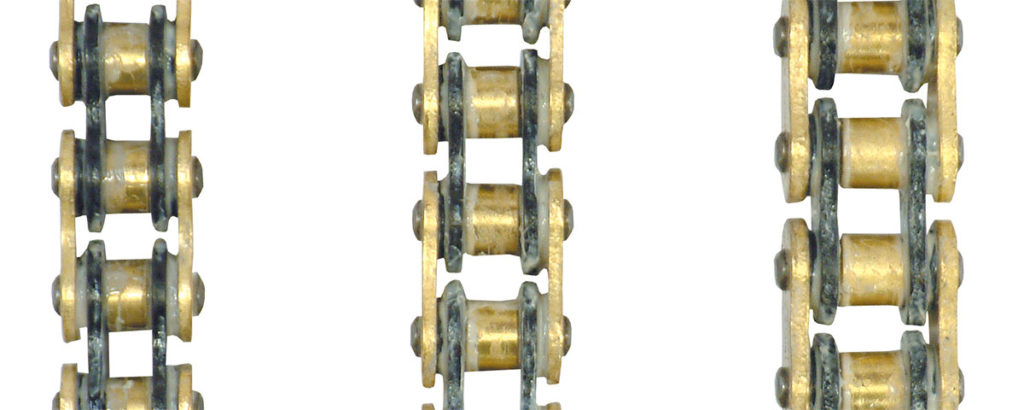
So, there you have it. The moral of the story is lube often. A well-lubricated chain is quieter and has a lot less drag allowing the motor to spin the rear wheel without having to force its way past a worn or tight chain. And if you are lubing your chain every 500 miles, you will be very aware of its condition for when it will need an adjustment or a replacement.



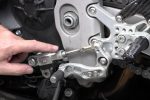

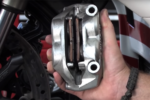
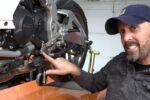
You mentions “two chains to one set of quality steel sprockets” as your rule of thumb. What sprocket brands do you feel are high quality? Thanks for the excellent videos.
We have always had very good luck with Superlite Sprockets.